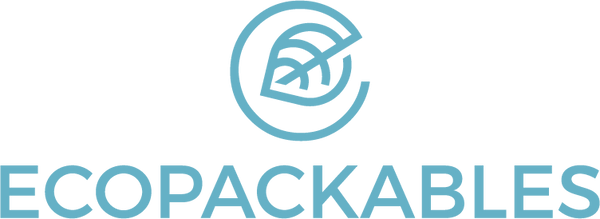Ever wondered about the differences between primary, secondary, and tertiary packaging? Let's dive into these concepts while exploring how we at EcoPackbles can assist you in your journey toward eco-friendly packaging solutions.
Primary Packaging:
What is it: Primary packaging is the first layer of defense for your product. It's the face of your brand on store shelves and online, the packaging your customers see and interact with before making a purchase and every time they use your product.
Example: Imagine your custom cosmetics packaging as the sleek jar or bottle that not only protects your product but also catches the eye of shoppers with its elegant design and eco-friendly materials.
How We Can Help: At EcoPackbles, we specialize in infusing your primary packaging with sustainable materials and design ingenuity. Whether it's recycled retail boxes for your eco-friendly skincare line or compostable pouches for your organic snacks, we've got the tools to make your products stand out while keeping the planet green.
Secondary Packaging:
What is it: Secondary packaging is the box or container that protects your product during transit. It's what the shipping label is put on and is the first thing your customer sees upon delivery.
Example: Envision your custom e-commerce packaging as the sturdy box or padded mailer that cradles your product, ensuring it arrives safely at its destination while making a memorable impression on your customer with its beautiful custom design.
How We Can Help: Our secondary packaging solutions prioritize durability and sustainability. From sturdy corrugated cardboard boxes to polymailers made from recycled materials, we offer options that not only protect your products but also reflect your commitment to environmental responsibility.
Tertiary Packaging:
What is it: Tertiary packaging comprises the logistical infrastructure supporting the transportation and storage of your products on a larger scale. It includes pallets, stretch wrap, and other materials used for bulk handling and shipping.
Example: Consider plastic-free clothing packaging for wholesale distribution, with sturdy pallets or reusable containers orchestrating the seamless movement of your garments from factory to store.
How We Can Help: Our team can provide expert guidance and recommendations to ensure that your tertiary packaging aligns with your sustainability objectives and logistical requirements. We can assist you in considering your options and making the best decision based on your needs, goals, and budget
The difference between primary, secondary, and tertiary packaging is not always clear. At EcoPackbles, we're here to guide you through this journey, one eco-conscious package at a time. Let's collaborate to create packaging solutions that not only protect your products but also safeguard our planet's future.

